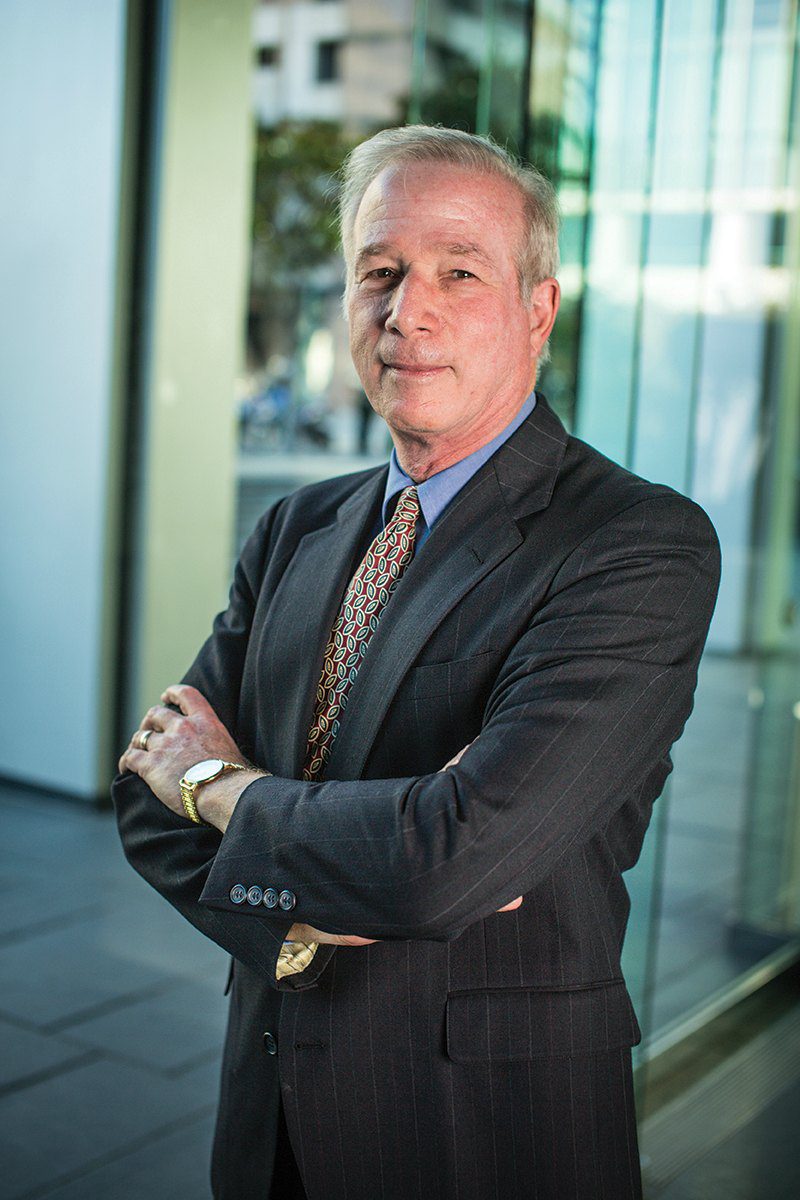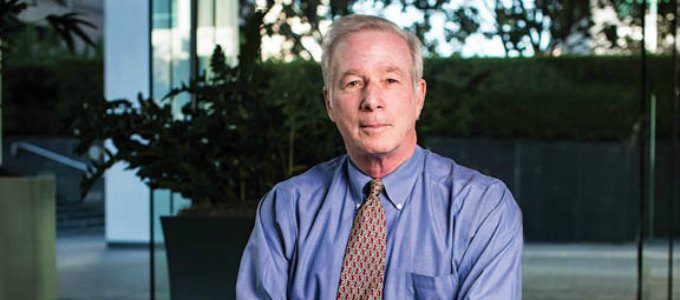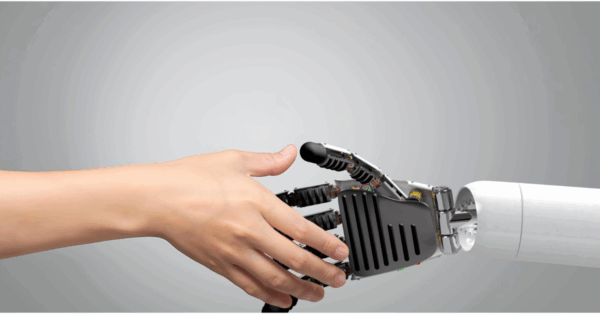There are two kinds of people in this world: those who stay on the path and those who crave the freedom to venture off it. Put Bob Sachs in the latter category.
When he enrolled in Union College in Schenectady, New York, he intended to become a doctor. Though he jokingly blames his decision to change majors on a contentious relationship with chemistry, he said the real reason he made the switch was because pre-med limited the opportunities he had to learn.
“It was pretty narrow and confining,” Sachs said. “I was at a liberal arts college, and there were an awful lot of things I wanted to do that it didn’t allow me to.”
So he declared a psychology major instead. After four years of immersing himself in the humanities, Sachs pursued a master’s degree at the University of Hartford while simultaneously working. Psychology interested him, but he wasn’t quite sure if he wanted to fully commit.
Two years later when he entered a doctoral program for counseling psychology at the University of Pennsylvania, he still wasn’t ready to choose a single path. He considered perhaps having an academic career, counseling individuals or families or a combination of the two. It didn’t narrow down his career options much.
Clarity came when Sachs worked with graduate students in an interdisciplinary health education program. The program brought together psychology, medical, pharmacy and dental students to learn and work together so each discipline would be exposed to its counterparts’ approach to health issues. Learning drove new and innovative action. “I really liked being able to apply something that had become second nature to me in a different context,” Sachs said.
The final push toward his eventual career came after he completed his dissertation and took a position as an assistant professor of behavioral science at the University of Pittsburgh School of Dental Medicine. Never one to be tied down to a single activity, Sachs taught behavioral science to dental students and dental hygienists, did some research, wrote a few papers and counseled students. “I only got four papers published in the two years, and every single one of them was on a different topic.”
Sachs finally admitted he could never study just one thing. There was too much to learn to limit himself. So he left academics and entered the business world.
Thirty-four years later, Sachs is the vice president of national learning and development at KaiserPermanente, a health care consortium based in Oakland, California, and it’s a great fit. His biggest challenge, driving learning in a decentralized environment, means every day he is learning something new and helping others do the same.
Two Careers, One Big Challenge
Sachs had a strong academic background in psychology, but his business skills were lacking. He needed a company that would teach him about business and allow him to try a lot of different roles. He found that at the Hay Group, a global management consulting firm based in Philadelphia.
“I had to spend time writing job descriptions andultimately evaluating jobs using their evaluation methodology,” Sachs said. “It was a great way to understand how organizations and jobs were put together. I was able to explore the framework looking at the fit between people and jobs.”
In his 16 years at the Hay Group, Sachs rose through management to become a partner. The opportunity to work with and develop a group of professionals appeased his psychology background, but he also made sure that his offices were profitable and growing. Sachs said this responsibility evolved his psychology training from academic knowledge to a deliverable business skill.
Along the way, his career moved him to different cities. Starting in Pittsburgh, Sachs moved to Cincinnati, Los Angeles, Chicago and back to Los Angeles. During the last move, he decided to try something different — again. He had a client by the name of Kaiser Permanente that the Hay Group did a big project for centered on building skills. “As I was talking to them about opportunities for future work, they suggested it might be better as an internal position instead of a consultant.”
Sachs agreed. He was hired to lead a leadership development program at Kaiser that involved executive development and succession management. Given the company’s size, some 175,000 employees, he would be directing learning on a large scale. The real challenge, though, was the company’s decentralized structure.
Kaiser Permanente is driven by regional business units. Within each region, the company brings together health care delivery from a hospital, outpatient ambulatory and insurance standpoint. Before Sachs joined the company, each region was effectively serving its clients, but there was no system to drive consistent development on a national scale. Learning went on in every region and function, but it was totally uncoordinated.
The problem is typical in organizations with a decentralized structure, said Kenneth Derr, former chairman of the board at Chevron Corp. “Delegating authority to business units puts more decisions into the hands of those with the most knowledge of our markets and customers,” he said. “Decentralized companies should be able to get better and faster decisions that are also more customer-focused.”
But, if information is not being shared, it’s difficult to achieve equal measures of growth. Kaiser Permanente’s previous solution to unifying regional units was a learning management system that Sachs described as clunky and outdated. A lack of interest in the technology resulted in the system falling behind on enoughupgrades that it was no longer supported by the vendor.
“It ended up collapsing under its own weight,” Sachs said. “Everyone looked around and asked, ‘Who should we ask to fix it?’ They decided, ‘Well, what Bob does is kind of related to learning stuff, let’s ask him to do it.’ ”

Sharing the Solution
The first step toward finding a solution was to get everyone in the same room. Everyone who had been using the outdated learning management system was called into a meeting to discuss what features they needed. The turning point came when one of the attendees got up from his seat, walked to the flip chart at the front of the room, drew a stick figure of a nurse and asked those in the room to shout out what they felt was important for that nurse to know. As the number of arrows grew, the room realized it was impossible to expect nurses to learn everything they need to know in the current format and actually perform their job.
“This was recognition that each of us doing our own thing was not the best way to produce a viable learning organization for the company,” Sachs said. “We needed to move from a product-based approach where I have my product in management develop, someone else had their product in compliance, someone else had their training in performance improvement, and we’re all trying to sell our product to that same learner and in some cases push our product at that same person.”
Sachs began convening anyone involved in learning under the human resources umbrella to develop high-impact learning solutions that could be delivered across the regions. He called the group the National Learning Leaders, and it operates under a federated model. Leaders with learning agendas from sales, account management, compliance, quality improvement, patient safety and, most recently, succession management meet face-to-face three times a year and in subsets every month that group meeting isn’t scheduled.
“A lot of it is how we develop core learning solutions that can be leveraged across the enterprise, how we develop and leverage some core infrastructure to use and what kinds of services we provide that can be used by these learning organizations in the company,” he said.
Of course not everything comes easily. In November 2014, the nurses at Kaiser Permanente went on strike as part of a planned two-day protest, citing concerns about patient-care standards and Ebola safeguards, according to the Associated Press.
Cathy Hague, Kaiser’s director of learning and organizational development in the Georgia region, has been a member of the National Learning Leaders for the past five years. As an employee in one of Kaiser Permanente’ssmaller regions, she said she was eager to gainaccess to resources and solutions available within the larger regional units. “We’ve been able to move towards a more consistent manner of leading learning across the enterprise. Another positive output has been the relationships gained across the regions from other learning and leadership development experts.”
Hague has been able to specifically leverage theseresources through Leadership in Action, a self-nominated leadership program where managers attend an interactive three-day simulation in a classroom setting followed by a 12-month development track that includes ongoing peer coaching, manager support, self-paced virtual courses and other activities that support participants’ individual action plans.
“We were able to take advantage of a program that was developed outside of the Georgia region, but was then implemented inside the Georgia region,” she said. “We’re delivering it now, and it’s been quite powerful.”
The learning leaders affect other areas as well. Sachs described similar programs developed to drive learning in areas such as performance improvement and patient safety. “It’s about developing that strategy, developing the methodology, developing some specific learning tools that can be scaled for use in any region,” he said. “Supporting all of that is a big part of the National Learning Leaders’ mission.”
The technique also allows HR to begin aligning the approaches to track employee performance nationally. Sachs said that will help put the right solutions in place to meet business needs and integrate things to make sure learning reaches the right audiences in the right ways to be efficient and allocate resources effectively.
The scalability of initiatives is a point of pride for Sachs, who has to contend with the number of employees being educated in addition to developing programs that meet their needs in person and online.
Achieving a Central Goal
Sachs’ efforts have produced measurable results at Kaiser Permanente. For instance, prior to the National Learning Leaders initiative, the company would only have 50 employees attend a classroom-based training course on patient safety. To date, there have been 19,000 completions for online and hybrid training modules.
“The National Learning Leaders group has become more and more valuable over the course of the last five years,” Hague said. “Bob is the major reason. He is a thoughtful partner in the work and is engaging in terms of involving all of the partners in a dialogue around what’s important for the enterprise from a learning and leadership perspective.”
Sachs is humble in the face of all this praise. To him, each day is another opportunity to learn and make an impact. He said he stayed with the national learning work, despite not having an official structural mandate, because it’s the right thing to do. That, and he enjoys when things come together, people collaborating and coming up with things that are better for the organization. “That’s what I really enjoyed seeing happen. It doesn’t happen every day, and you have to have a lot of persistence and a sense of humor. Aligning people’s agendas is not easy work, but when it happens, it’s really worth it.”
















